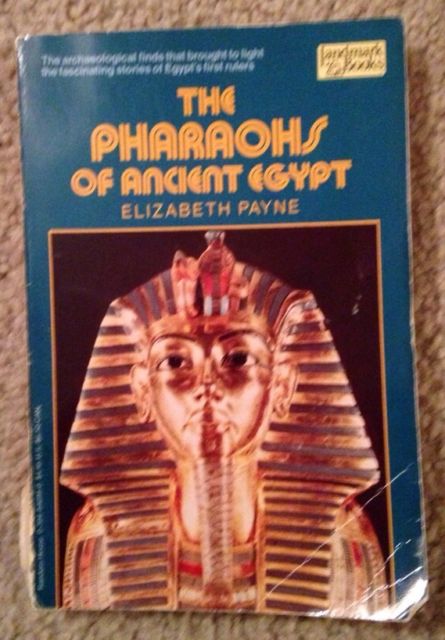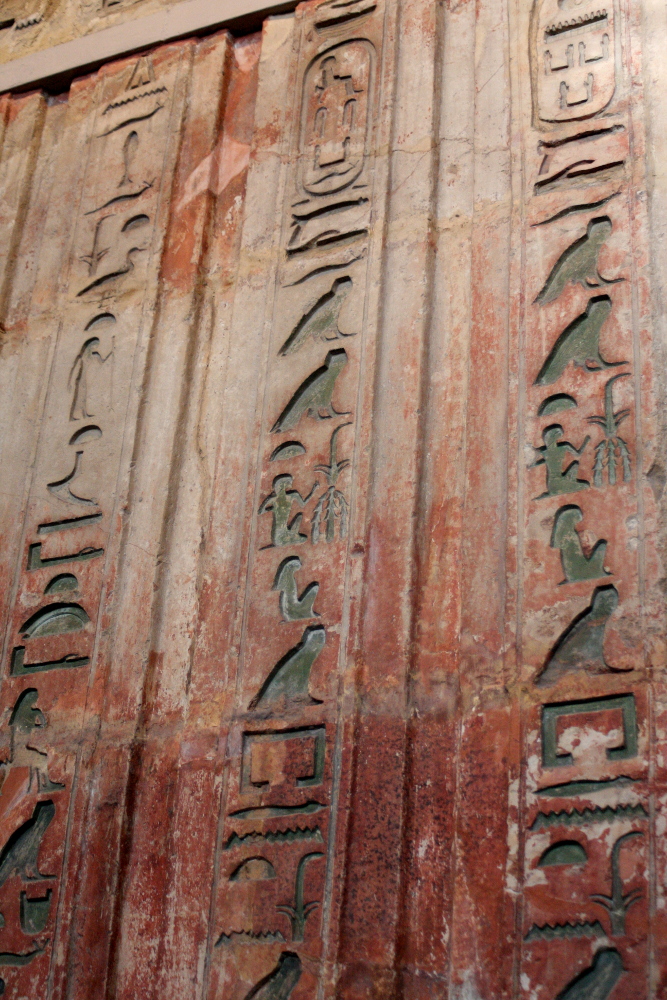
I remember walking into my fifth grade social studies classroom and seeing my book leaning up the blackboard. I sat in the front row in the aisle next to the window. Throughout class I sat there looking at it, in an attempt to remember leaving with it this time. It was only sitting up there because I had forgotten it in the classroom the day before.
The book, Pharaohs of Ancient Egypt, had a blue cover with a photo of King Tut on the front of it. The cover was worn by this time, I was on at least my second re-read, but probably third or fourth. This was a year before writing a sixth-grade tome on mummification in various cultures, but well after declaring to my family I was going to be an archaeologist and travel the world.

One summer I joined the ranks of other wanna-be Egyptologists in a class at College for Kids. I learned how to read hieroglyphics. I marvelled at the Rosetta Stone, and how important it was in learning about the Egyptians of old. I re-read that book (again), and read stories of Jean-François Champollion struggling by mid-night oil over the stone, using the Greek to translate the hieroglyphs.
Walking in to the British Museum brought all the memories and childhood dreams crashing back. The statues, the mummies, the hieroglyphs, and right in the middle of it: the Rosetta Stone. The very stone which changed our understanding of history. I walked through the room, breathless. Graceful stone gods, kings, queens. I had not expected them to be so huge. Some life-size statues of the gods seated in tombs. Some larger than life heads sitting up on pedestals, towering over us as we walk through.
Papyrus scrolls, sarcophagi covered in writing, colourful paintings, texts to accompany the dead on to the next life. Cases full of brightly painted death masks. Gold, lapis lazuli. The mummies of cats and other animals.

This all a far cry from my first mummy: A dark wrapped figure in the basement of the local museum when I was ten years old. There was none of the colour. None of the prominence. But, still, all of the excitement. I remember hoping that in a few thousand years, my body could be on display in a museum. I hoped that I could somehow contribute to future generations understanding the time in which I lived.
Life for me lead in other directions than ancient Egypt and the dirt of archeology. Sometimes walking into a place of such excitement; sometimes standing in front of history; sometimes being in the presence of greatness, marvelling at the Rosetta Stone … sometimes I wish it hadn’t.